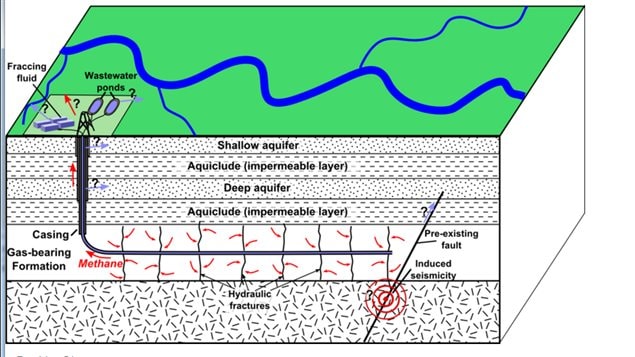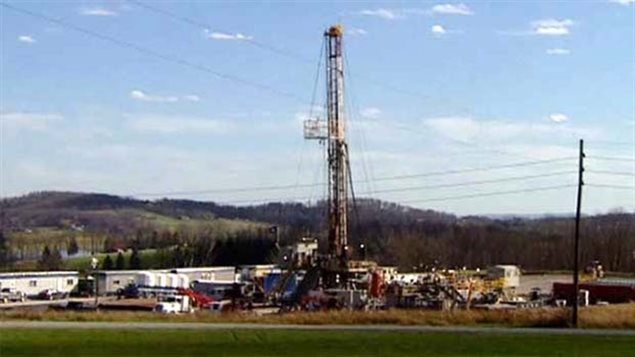Much concern has been raised about the use of hydraulic fracturing of shale to extract natural gas.
Stephen Grasby (PhD) is a research scientist with the Geological Survey of Canada and an adjunct professor at the University of Calgary
Listen
The gas-bearing shale occurs at substantial depths in the earth. In the process of “fracking” as its commonly known, companies say there is little chance of contamination of water supply as some of the contaminated water resulting from fracking is left deep underground where it can do no harm, while some is recovered to the surface.
Stephen Grasby says for the most part the contaminated material would remain underground in stable rock formations.
There are cases however where water does circulate to extremely deep regions, where rock formations have been disturbed, especially around mountains.
In some cases drilling is taking place not far from such occasional deep water springs.

The hydrogeologist is quoted in several newspapers from a recent presentation to the Geological Society of America’s annual meeting in Vancouver. “We can see right next door to where shale gas development is going on that we do have circulation of surface (waters) down to five kilometres depth and back to surface again”.
Others have expressed concerns that with thousands of wells drilled across the prairies, toxic water and gas from the sites has the potential to eventuall migrate to the surface. However Grasby says that drilling mostly occurs in rock formations that have been stable for millions of years and so doesn’t see a high risk.

Nevertheless a number of jurisdictions have imposed moratoria on fracking such as Australia, France and Bulgario, and in the Canadian provinces of Quebec and New, Brunswick and Nova Scotia, and several jurisdictions in US states.
University of Victoria study on fracking in British Columbia







For reasons beyond our control, and for an undetermined period of time, our comment section is now closed. However, our social networks remain open to your contributions.